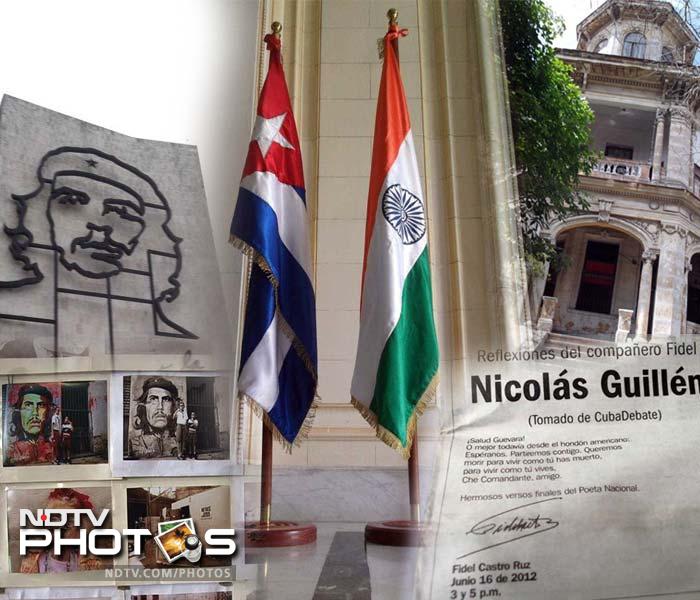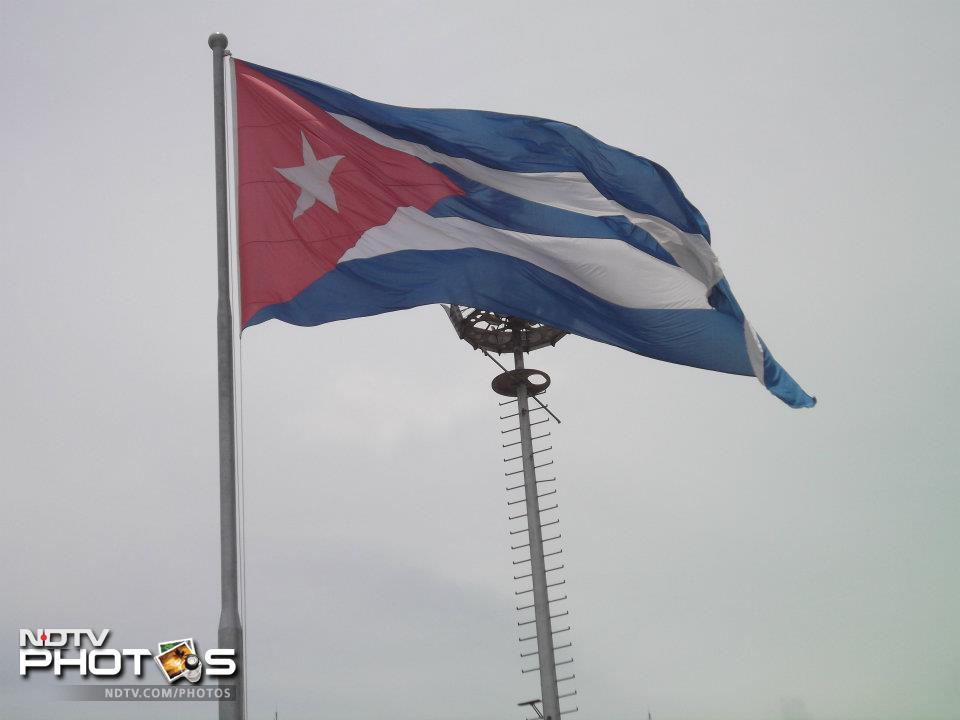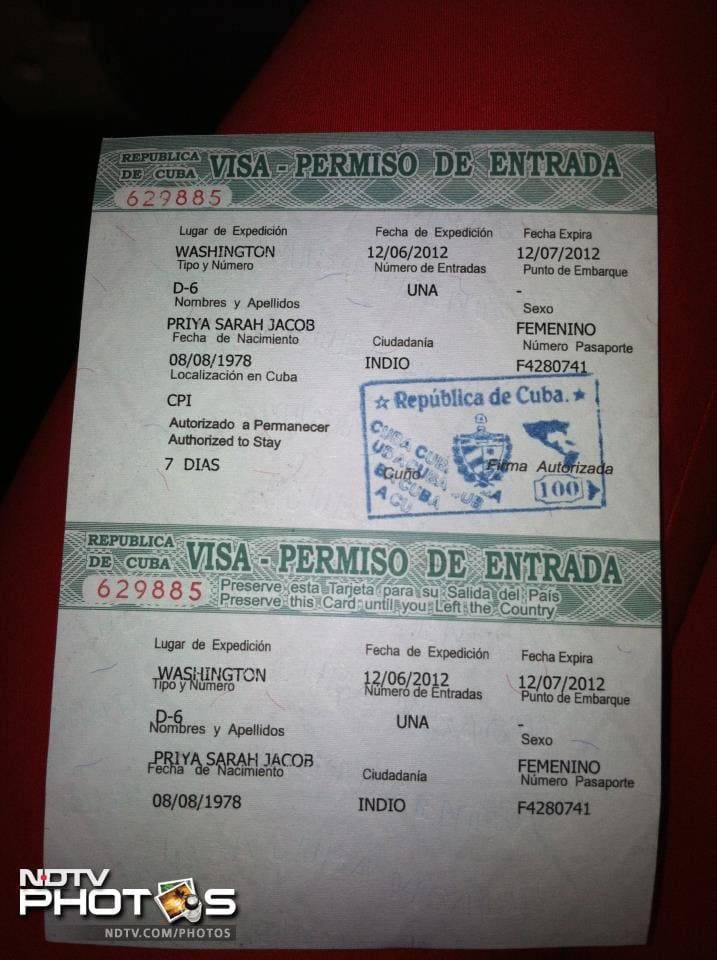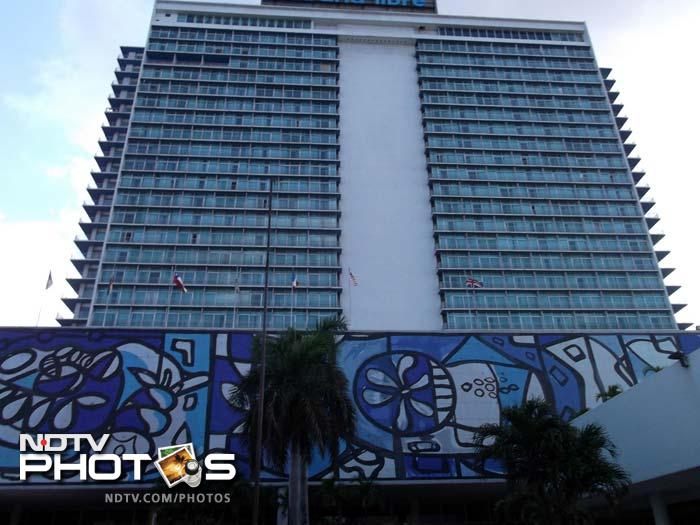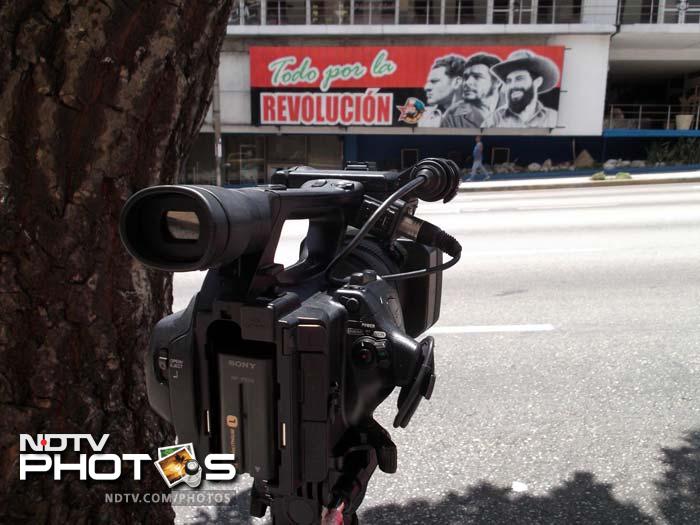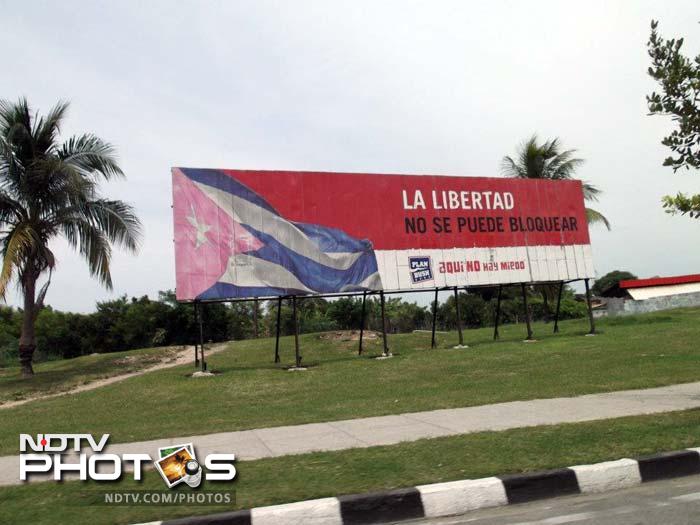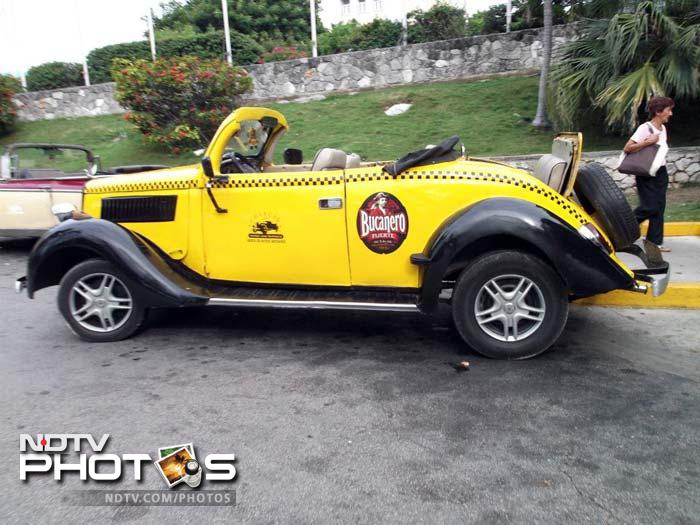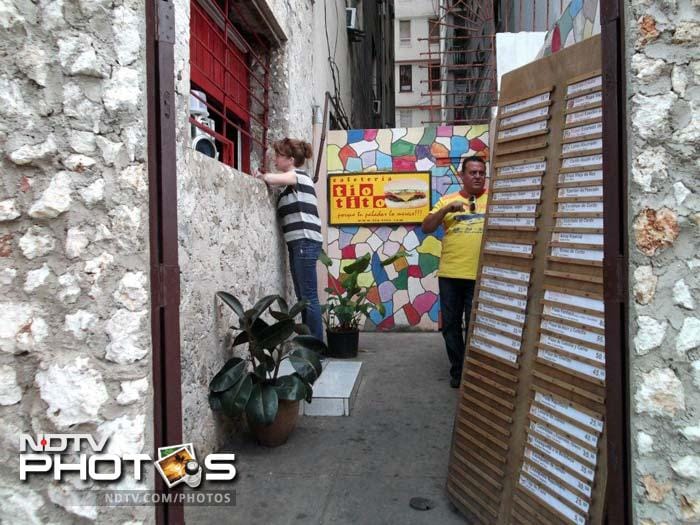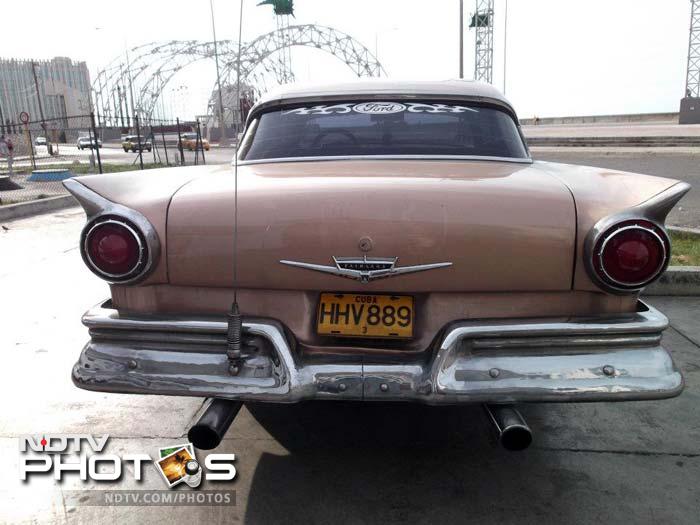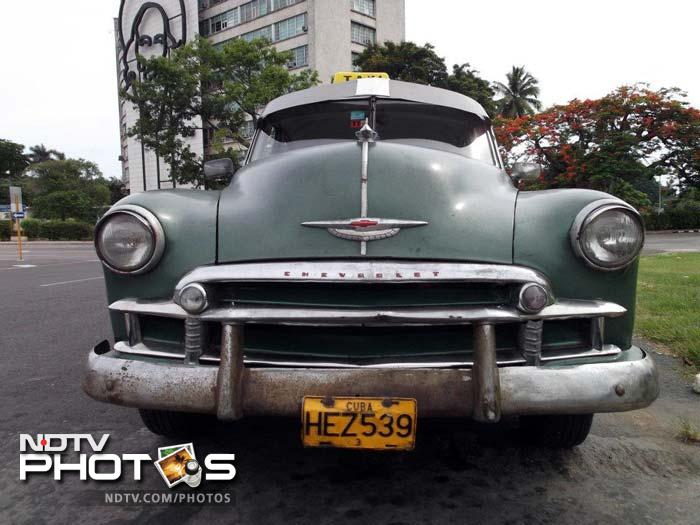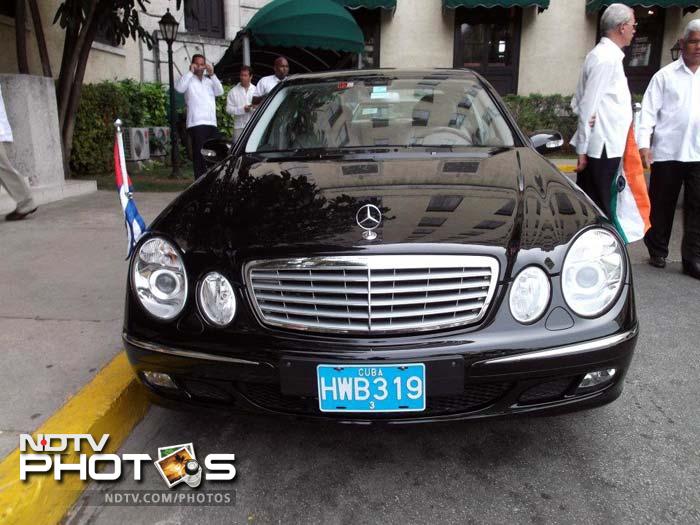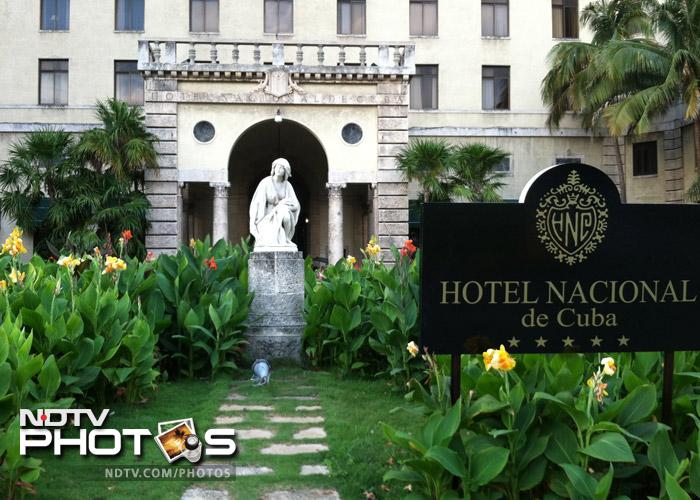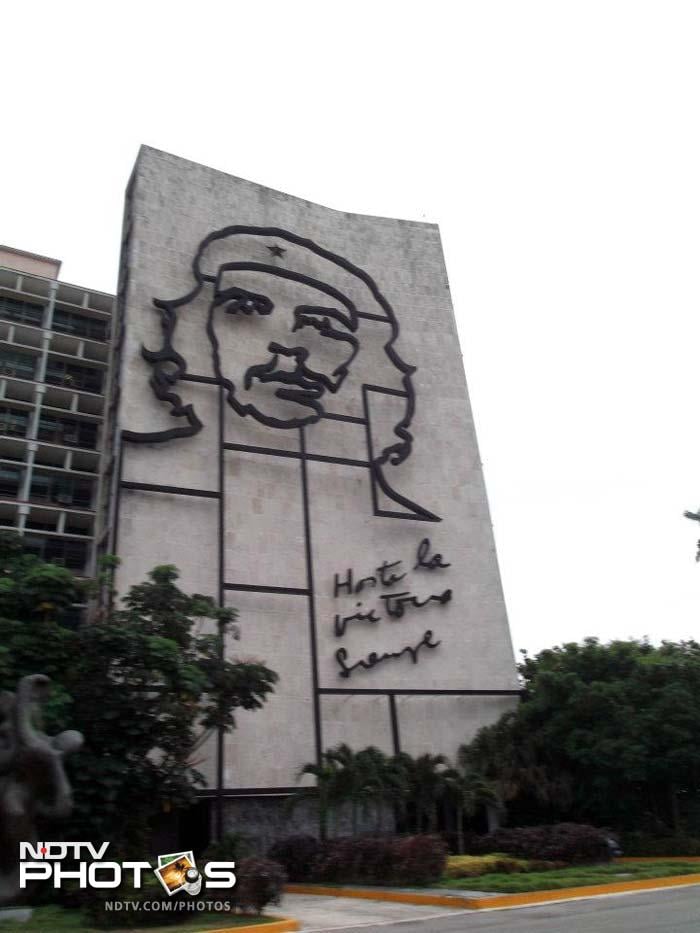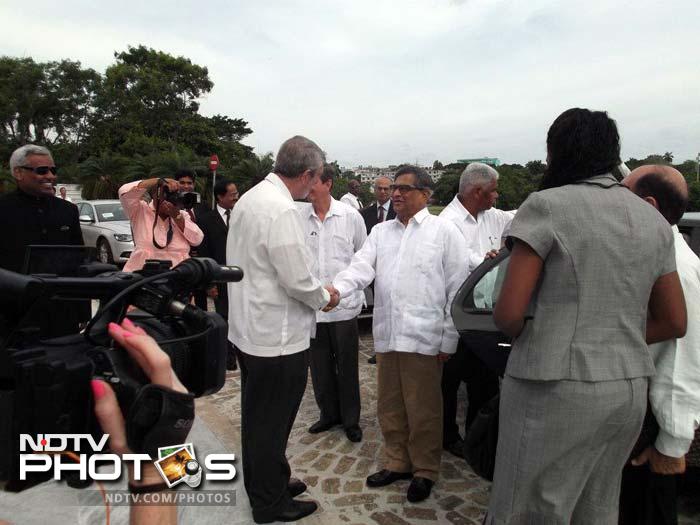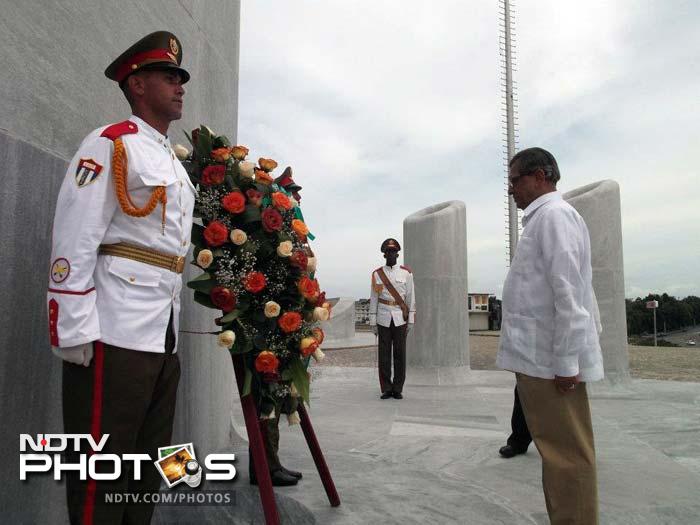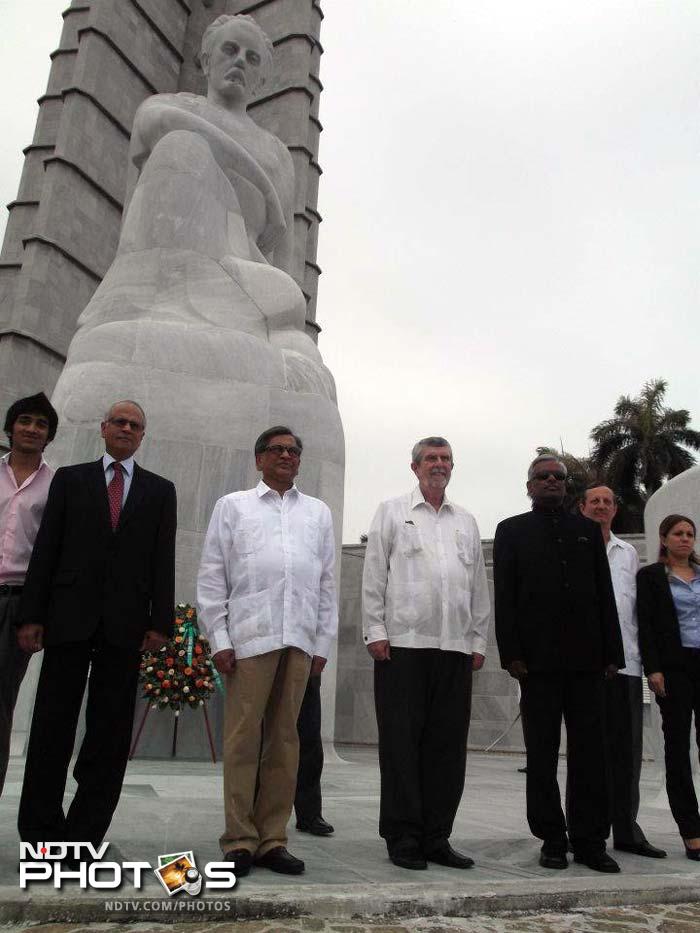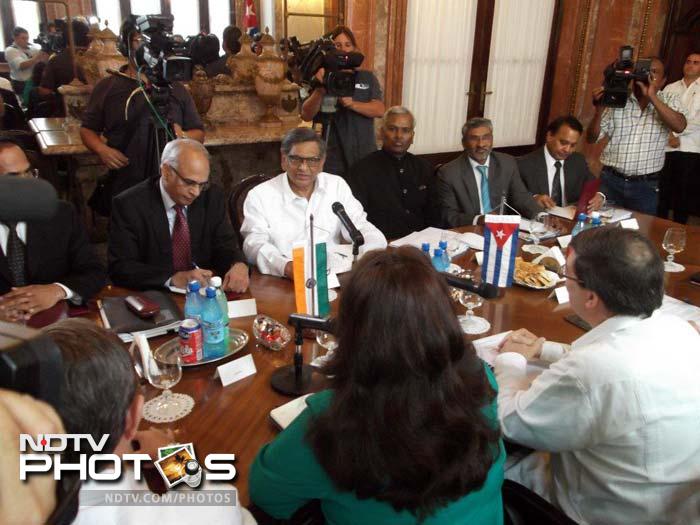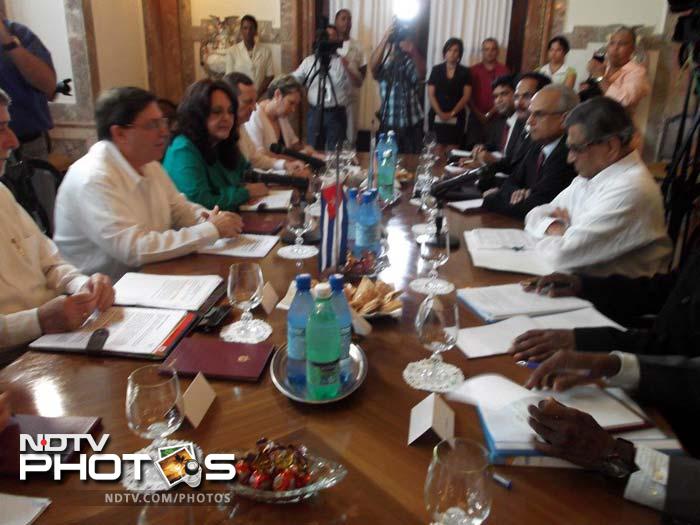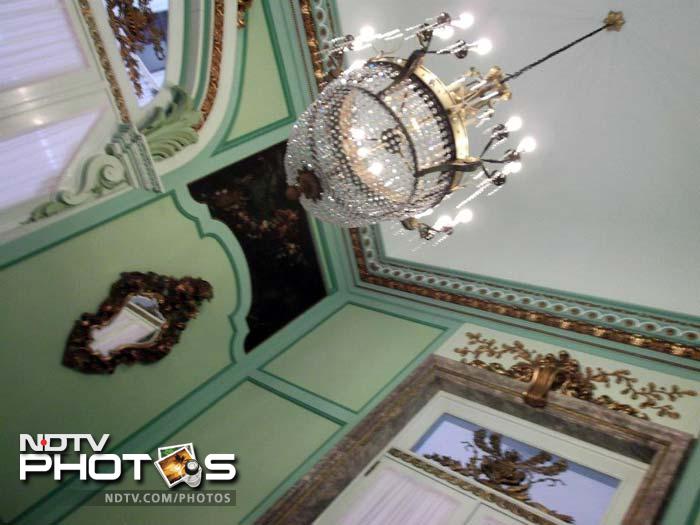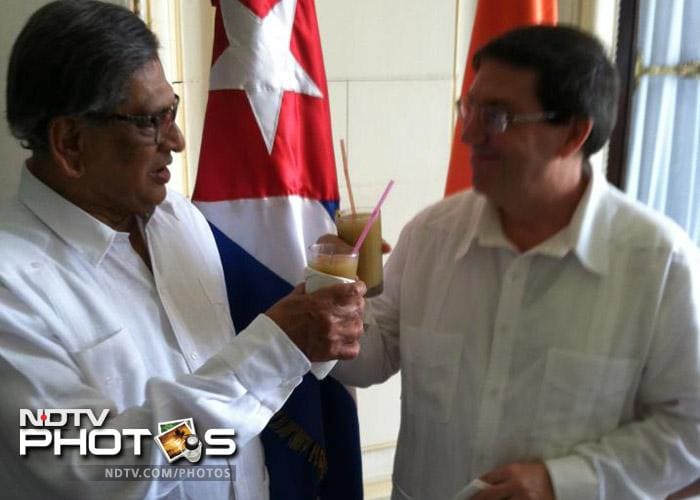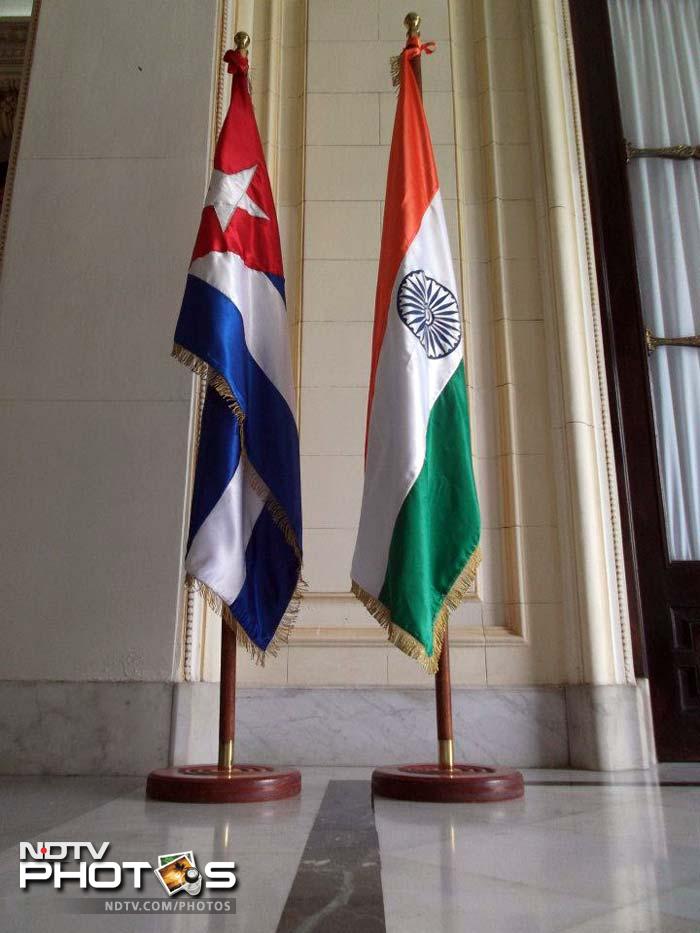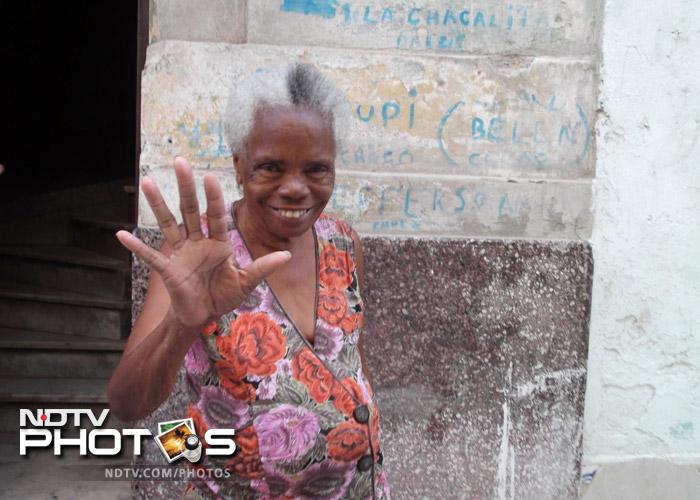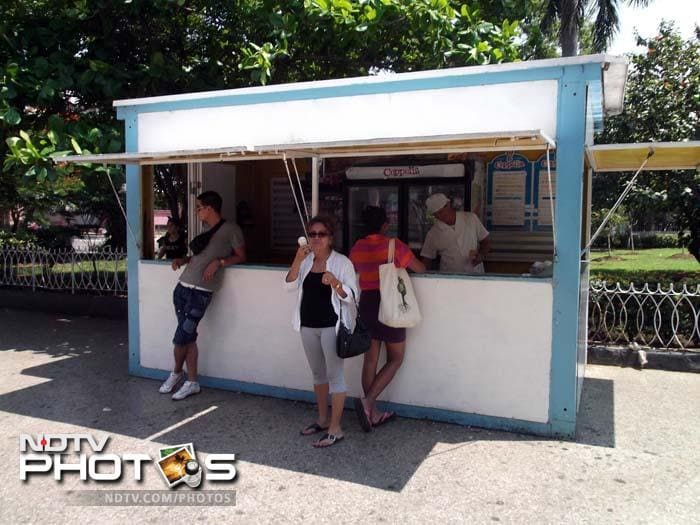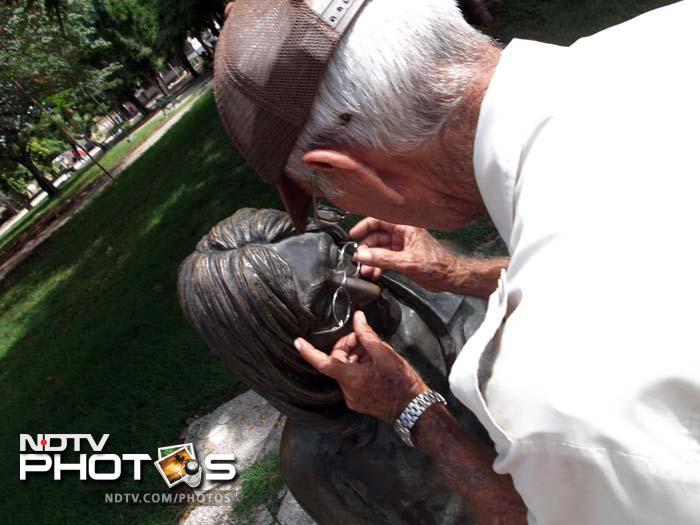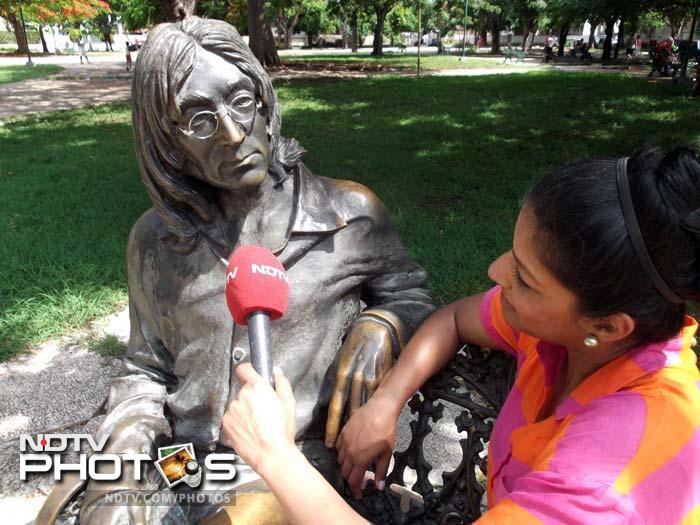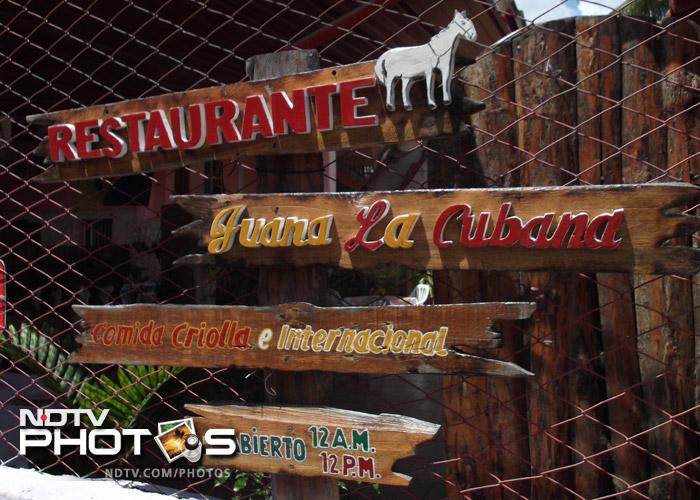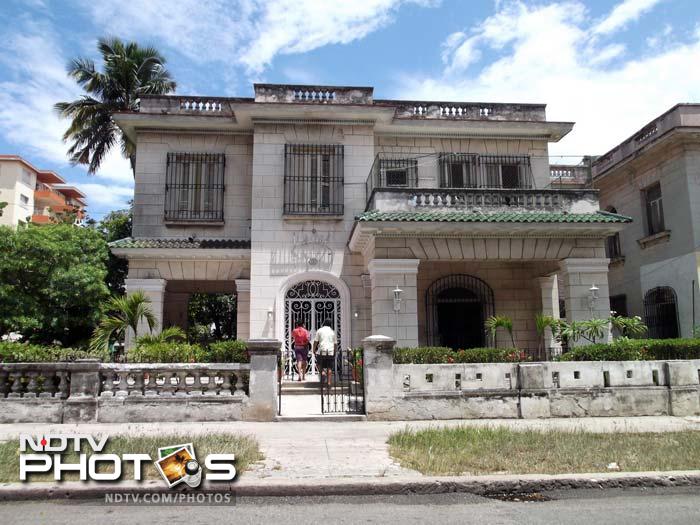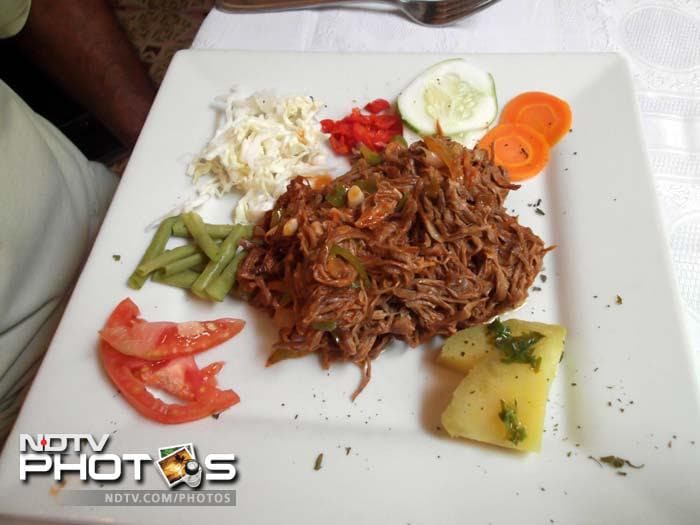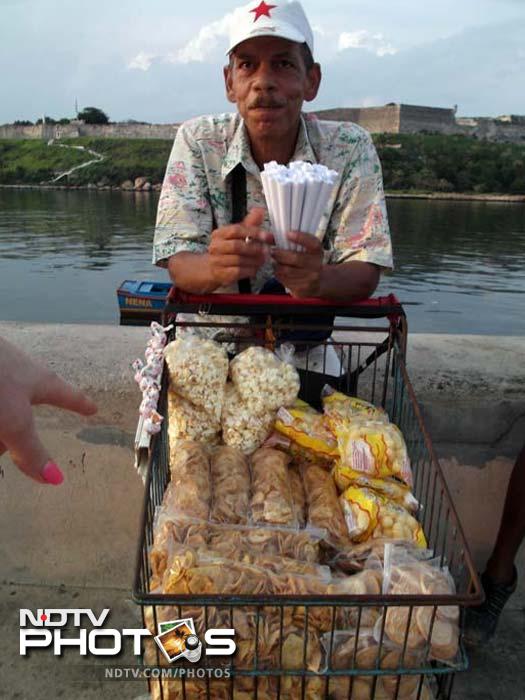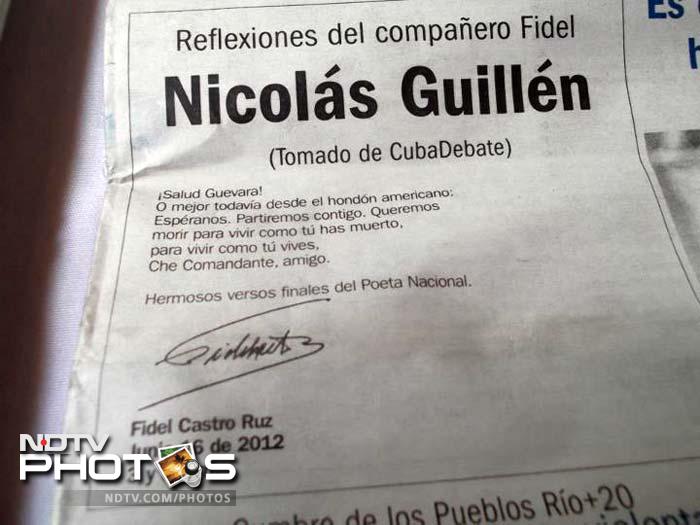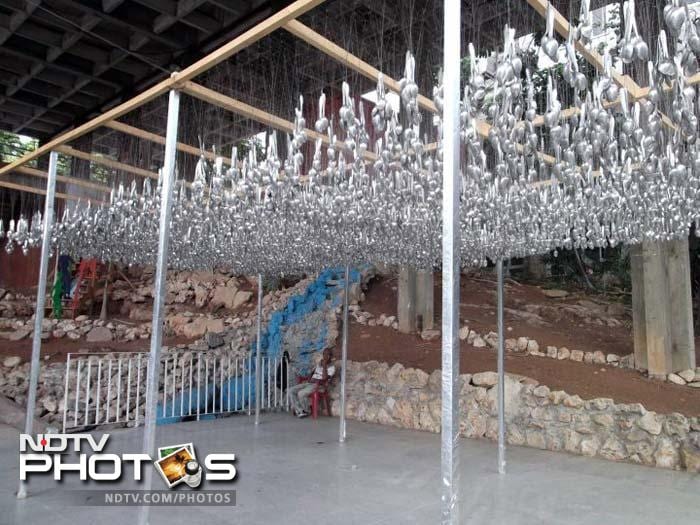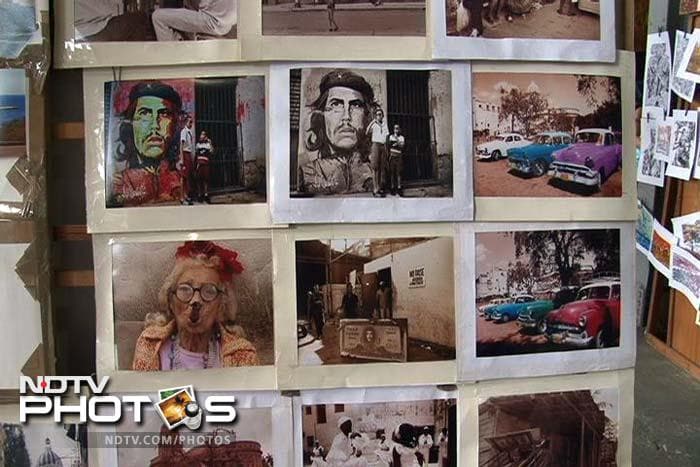Inside Castro's Cuba
As the cliché goes, Cuba is known for its vintage cars, mojitos and cigars, but NDTV spent 4 days in Havana to get a sense of what the quality of life is for ordinary Cubans 50 years after the revolution.
In 2008, the ailing Fidel Castro handed over the presidency to his younger brother and fellow-revolutionary leader, Raul. Since officially taking over, the younger Castro has carried out blunt assessments of Cuba's condition and pushed for economic reforms. Let's take a look inside Castro's Cuba. (Photo courtesy: Sarah Jacob & Melody Weinstein)
-
As the cliché goes, Cuba is known for its vintage cars, mojitos and cigars, but NDTV spent 4 days in Havana to get a sense of what the quality of life is for ordinary Cubans 50 years after the revolution.
In 2008, the ailing Fidel Castro handed over the presidency to his younger brother and fellow-revolutionary leader, Raul. Since officially taking over, the younger Castro has carried out blunt assessments of Cuba's condition and pushed for economic reforms. Let's take a look inside Castro's Cuba. (Photo courtesy: Sarah Jacob & Melody Weinstein) -
The advantages of having an Indian passport in the US. Travel to Cuba by US citizens and permanent residents is restricted. Regulation does not limit travel of US citizens to Cuba per se, but it makes it illegal for US citizens to make transactions (spend money or receive gifts) in Cuba. If Americans travel to Cuba, they avoid getting their passports stamped at Cuban immigration. (Photo courtesy: Sarah Jacob & Melody Weinstein)
-
The Havana Libre Hotel: Originally the Habana Hilton, the hotel was designed by the Los Angeles firm Welton Becket & Associates, who had previously built the Beverly Hilton. When it opened on March 22, 1958, the Habana Hilton was Latin America's tallest and largest hotel. At one point, it served as the headquarters of Fidel Castro. As relations with the US deteriorated, it was nationalised by the Cuban government in 1960 and renamed the Hotel Habana Libre (Hotel Free Havana). (Photo courtesy: Sarah Jacob & Melody Weinstein)
-
On the streets, all one is greeted with are state billboards. While it may be a refreshing change from the aggressive marketing of consumer goods companies in the US, it does create a problem for the small new breed of entrepreneurs who have embraced President Raul Castro's push for limited free-market reform. (Photo courtesy: Sarah Jacob & Melody Weinstein)
-
Cuba is probably the only nation in the Western hemisphere without the ubiquitous Golden Arches. The only McDonalds on this island is on the US Naval base of Guantanamo. This is a local burger and Cuban sandwich joint. (Photo courtesy: Sarah Jacob & Melody Weinstein)
-
There are an estimated 60,000 pre-1960 American cars in Cuba. About 150,000 existed at the time of the 1959 revolution, shortly after which the Detroit auto giants and all American manufacturers were forced to stop sending goods to Cuba to conform to the United States' embargo. (Photo courtesy: Sarah Jacob & Melody Weinstein)
-
Movies about Cuba like Buena Vista Social Club have glamorised these jalopies. While foreigners swoon over these vintage cars and snap up loads of pictures, Cubans would love to trade in for a new car --but they can't get their hands on any. (Photo courtesy: Sarah Jacob & Melody Weinstein)
-
The Hotel Nacional de Cuba is an historic luxury hotel located on the Malecón in Havana, Cuba. It opened in 1930, when Cuba was a prime travel destination for Americans, long before the embargo. Among its first illustrious guests were Frank Sinatra, Ava Gardner, Marlon Brando and Ernest Hemingway. India's foreign minister S M Krishna also stayed at the Nationale during his bilateral visit to Cuba. (Photo courtesy: Sarah Jacob & Melody Weinstein)
-
A stylized image of Che overlooks the Plaza de la Revolución ('Revolution Square') in Havana, where political rallies take place. Many government ministries, and other buildings, are located in and around the Plaza. Under the famous Che Guevara image is printed his well-known slogan 'Hasta la Victoria Siempre'. (Photo courtesy: Sarah Jacob & Melody Weinstein)
-
Ceremonial welcome for India's foreign minister S M Krishna. While India has had an embassy in Cuba for the past 50 years, this is the first visit of a foreign minister in 23 years. A time, during which much has changed in both countries, and in the rest of the world. (Photo courtesy: Sarah Jacob & Melody Weinstein)
-
The strains of the Indian National anthem fill the iconic revolution square in Havana as India's Foreign Minister S M Krishna started his 3-day visit to the Cuban capital by paying homage to the father of the Cuban revolution, Jose Marti. (Photo courtesy: Sarah Jacob & Melody Weinstein)
-
The apparent warmth and bonhomie on Mr Krishna's three-day visit is reflective of both countries' desire to strengthen and renew relations and take it to the next level. According to Mr Krishna, "Our political relations are excellent, but we must give greater economic content to those ties." India seeks to boost economic ties with oil rich Cuba. (Photo courtesy: Sarah Jacob & Melody Weinstein)
-
Cuba and India have historically had strong relations since the revolution in 1959. India was among the first countries to recognize Cuba and Prime Minister Jawaharlal Nehru was among the first major world leaders to visit Havana in 1960.
The personal role of President Castro in forging the India-Cuba alliance is well-known. The image of him embracing Indira Gandhi while handing over the NAM chairmanship to her in 1983 has become iconic. But in a world where international affairs are ruled increasingly by pragmatism, the challenge for New Delhi is whether it can build on the goodwill of a historic alliance, based largely on an increasingly irrelevant ideology, and craft a new partnership for a new world. (Photo courtesy: Sarah Jacob & Melody Weinstein) -
A bronze statue of John Lennon who penned the lyrics Imagine no possessions. I wonder if you can lies in the public park in Vedado, Havana. Ironically, Lennon's glasses keep getting stolen. The park guard is deputed to hold on to them and put them on and off whenever somebody wants to take a picture. (Photo courtesy: Sarah Jacob & Melody Weinstein)
-
In 2008, the ailing Fidel Castro handed over the presidency to his younger brother and fellow-revolutionary leader, Raul. Since officially taking over, the younger Castro has carried out blunt assessments of Cuba's condition and pushed for economic reforms. Privately owned restaurants now provide some relief for food lovers from state-run restaurants. (Photo courtesy: Sarah Jacob & Melody Weinstein)
-
It is a tough life for vegetarians in Cuba. Cuban people love their meat. The staple foods eaten in Cuba include beef, pork and chicken as sources of protein. For carbohydrates, food in Cuba usually consists of a mixture of rice and beans with potatoes, used only rarely. Despite being an island, to be served fresh fish is rare. Cuba does not have fishing boats or trawlers. Fishing is not allowed, any fish caught has to be sold to the government. (Photo courtesy: Sarah Jacob & Melody Weinstein)

